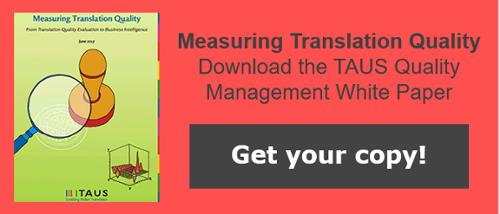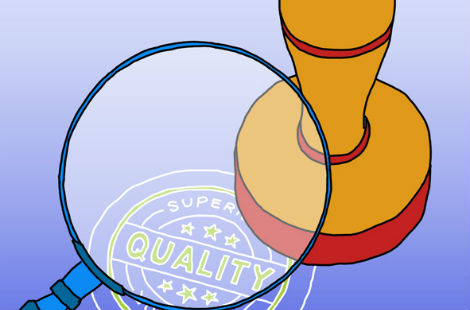Globalization and new technology have not left the translation services of the EU institutions untouched. Successive enlargements have more than doubled not only the number of member states but also the number of official languages. The extension and deepening of the European integration have led to more and more different text types being produced and to an ever-increasing translation demand. At the same time, in-house translation staff per language is progressively being reduced. The pressure to provide more, faster and with fewer resources has led to a need to constantly re-think how we carry out the translation work. We all know the buzz words: doing more with less, doing more and better with less, being effective and efficient, doing the right things and doing them right. Increased focus on processes and on making optimal use of technology does lead to efficiency gains. Mostly, however, what saves the situation is an increased use of outsourcing, which implies challenges for the quality assurance.
On the one hand, through the institutional translation of policy papers and information material, the EU aims at bridging the gap between the EU and the citizens and engaging people in the political processes at European level. On the other, in multilingual lawmaking the translations are not "just translations", but equally authentic language versions. The translations are applicable laws, not just information about the law. This implies high quality requirements, and also a need to ensure quality over time, which is a real challenge already for an in-house service. When outsourcing has to become a real resource and get integrated into the workflow processes, it becomes even more challenging. The quality concerns need to be identified and put into reliable figures to counterbalance the abundance of purely quantitative performance indicators.
In our short presentations, we will discuss some of the challenges we currently face with regards to quality evaluation:
- Traditionally, quality has just been taken for granted. Once texts have passed through our system, they have been assumed to be of high quality. The increase in the volume and variety of texts to be translated and increasing use of outsourcing have triggered an interesting reflection on what we mean by quality. How do we define quality? Should we have different levels of quality also in our system? With a constant cost-efficiency pressure, risk assessment appears to be the key.
- When thousands of people from 24 different language communities are involved in assessing quality, common sense approaches are no longer enough. How do we ensure a consistent understanding of quality and application of evaluation guidelines in practice?Most source texts are drafted in English by non-native speakers under time constraints and seldom edited before translation, so texts often contain mistakes, unintended ambiguities and even incomprehensible passages. It is not always possible to identify and contact the actual authors. How to fairly evaluate a translation of poorly drafted source texts?
- Professional standards presuppose that translators, as any professional service providers, get comprehensive job specifications and require that the assessment of the translation is done against these specifications. In practice, however, translators rarely get detailed specifications and translators are left on their own to infer the purpose, intended use and the audience of the document. How do you take these elements into account in evaluation? What happens if we just assess purely linguistic aspects?
- The analysis of the client feedback of the last years revealed that what translation professionals consider to be a serious translation problem is not necessarily perceived as such by the requesters or the end-users. Can translation professionals alone determine whether the translation is "fit-for-purpose"? If quality is a matter of meeting a client’s needs and expectations, who is the client?

4 minute read


